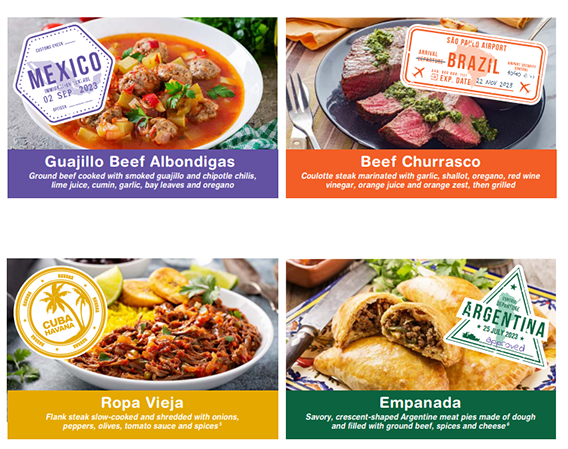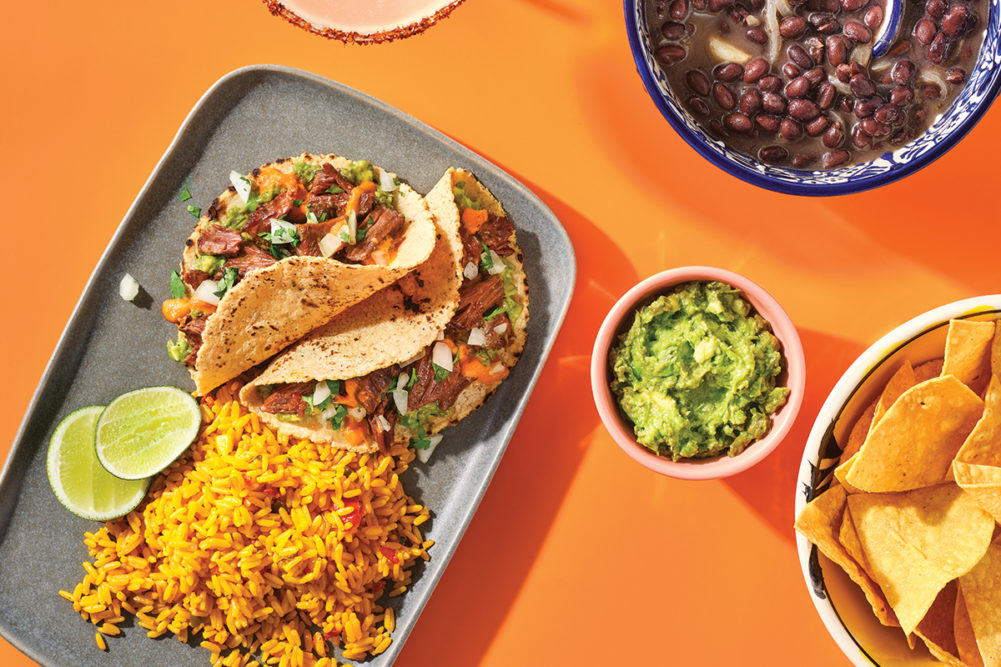Latin American cuisine’s popularity has become universally mainstream across consumer demographics and geographies. While multicultural consumers are projected to drive America’s population growth, doubling over the next 40 years, regardless of background, more consumers across the U.S. are seeking ways to prepare authentic Latin American cuisine at home.
Latin cuisine at home is also being driven by Gen Z, the most ethnically diverse generation, which tends to be more flavor-forward and has high influence over what their households purchase at retail for in-home meals.
This increase in global food and flavor demand reinforces the need for retailers to identify new ways to serve shoppers looking to expand their culinary palettes and to meet the demand for the flavorful and enticing foods Latin American cuisine offers. Cargill Protein North America marketing and insights teams are helping customers better understand the evolving changes consumers are seeking.
“Consumers are continuing their culinary tourism, looking to create globally inspired, authentic meals at home,” said Tammy Gonzales, marketing manager, Cargill. “Latin inspired dishes are widely consumed across shopper demographic segments and are becoming the rising star in the comfort food consumers are seeking.”
Creating connection and authenticity at home
While the interest and popularity of Latin flavors are on the rise, less than half of consumers are confident about cooking the recipes at home, but they still seek an authentic experience, providing an opportunity for retailers to connect with consumers in new ways.
Offering culturally authentic products and proteins that align to the meals consumers are exploring, and regionalizing product selection that aligns to the cultures surrounding retail communities will help in meeting the growing consumer demand.
“Retailers can meet consumer needs by customizing the fresh meat case with proteins popular in Latin American cuisine including thin-sliced steak, cheek meat and marinated beef,” Gonzales suggests. “Additionally, accessibility is crucial for enhancing shopper’s experience and purchasing behavior. QR codes on our Rumba Meats products that feature how-to information and recipes have been a great tool for helping make it easier for consumers to complete their meals.”
Flavor inspiration drives demand
Latin American cuisine is rising in popularity. Consumer adoption of the cuisine is attributed to the excitement and benefits the flavors provide.
 Source: Cargill
Source: CargillThe diversity of Latin American culture’s influence on recipes and menus can be seen from countries including Cuba, Puerto Rico, and the Dominican Republic, as well as South American countries including Argentina, Brazil and Peru.
While some traditional favorites including tacos and quesadillas rank among top favorites with U.S. consumers, many are seeking more elevated flavor experiences. Trending flavors and recipes span across beef, poultry and seafood dishes, including Birria, which has seen significant growth (+139 percent) on menus in U.S. restaurant chains in particular.
Cargill’s research identified that people are increasingly including emerging flavors into their recipes, whether it’s dialing up spice with the use of peppers like Morita or Habanero, topping meals with sauces such as Chimichurri, or finding ways to blend cuisines like Korean-Mexican flavors.
“We know a majority of consumers are continuing to cook at home, with convenience remaining a driving factor in their shopping and meal preparation decisions, which presents a great opportunity for retailers in how they market and display foods and products for their customers,” said Jay Furnald, consumer insights manager, Cargill.
Capturing the opportunity
The influence of Latin American cuisine provides the potential to drive new growth revenue and capture long-term loyalty for retailers. Cargill Protein North America marketing and insights teams can support retailers with the insights, tools, resources and ingredients to help retailers embrace this global flavor revolution.
Retailer opportunities
1. Ensure protein offerings reflect core assortment used in Latin American cuisine.
2. Increase Latin American flavor private label offerings.
3. Create displays with ingredients to complete meals.
4. Include recipes on digital shopping apps to help shoppers with meal prep.
5. Partner with chefs and influencers to share authentic culinary dishes.
Sources: Collage Group, U.S. Census Bureau, Historical Statistics of the United States (2019 American Community Survey, 2017 National Population Projection); Griffith Foods Latin Cuisine & Flavor Trends (January 2023); Datassential Latin Cuisine Trends (January 2023); Datassential (August 2023); Givaudan Latin Cuisine & Flavor Trends (January 2023); Cargill Protein, Multicultural Latin Cuisine & Flavor Trends Social Listening Report (January 2023).


